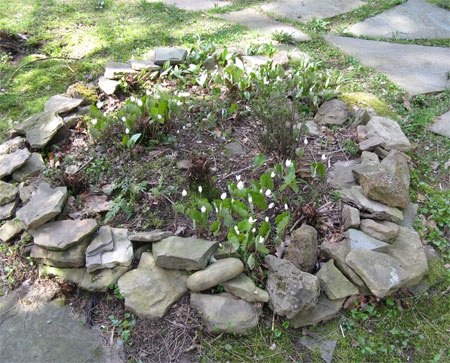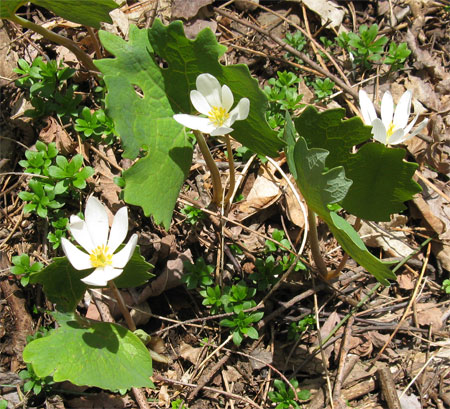Where Science, Art and Nature Come Together.
Bloodroot in Bloom

The bloodroot is in bloom on the top of Lillibridge Road. This sweet, little garden circle is near the cabin door, and at this time of year, only bloodroot, a patch of meadow rue, and a bit of violet is visible.
This area was already shaded when I was there this afternoon, so the bloodroot flowers had already closed their white faces. I wandered around till I found some in a sunny spot so you can see what it looks like open.

Formally known as Sanguinaria canadensis, bloodroot is a perennial that grows from rhizomes – a thick, horizontal, underground stem. It’s a low-grower, 7-9″ tall. Bloodroot blooms in early spring, with clear, white, simple petals and yellow stamens. The leaves are distinctive: broad with several lobes, rather thick, and their undersides are much lighter green than the tops. There’s often only one leaf per plant.
So if the flower is white and the leaves are green, why is this plant called bloodroot? It’s actually the color of that rhizome, which is a reddish orange.
According to lore, juice from the rhizomes were used as body decorations by early Native Americans. I don’t know if that’s true or not, but bloodroot does make a colorfast dye for fabric.
Like many native plants, there are said to be many medicinal uses of bloodroot from relieving sore throats to curing cancer. We’re not advocating any of them.
I do hope that you’ll take a ride to the top of Lillibridge Road and wander down by the cabin to see these spring lovelies. Don’t wait too long – they’ll be gone before you know it.